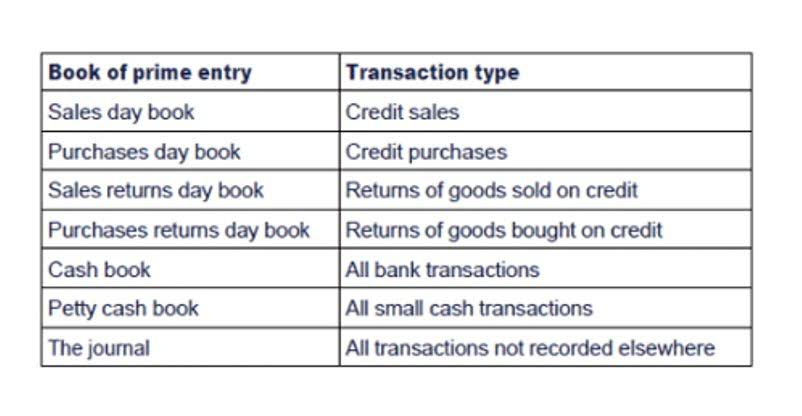
Luckily, Skynova’s accounting software and business templates can help you keep your small business’s finances organized, up to date, and running smoothly. Our software automatically generates double-entry account records every time your business makes or receives a payment. A T-Account is a visual presentation of the journal entries recorded in a general ledger account. This T format graphically depicts the debits on the left side of the T and the credits on the right side. This system allows accountants and bookkeepers to easily track account balances and spot errors in journal entries.
What is your current financial priority?

Business accounting is always about the flow of money or another value, and where that money ends up is what determines if it’s considered debited or credited. Let’s take a deeper look at T-accounts, how to use them, and how Skynova’s accounting software helps you streamline all of your business t accounts accounting. Double-entry accounting is a method of recording every transaction twice to ensure that nothing is missed. Every transaction has two equal parts, a debit one and a credit one. It is this simple for cash accounting, but it isn’t for accrual accounting, which you likely use.
Ask Any Financial Question
We will analyze and record each of the transactions for her business and discuss how this impacts the financial statements. Some of the listed transactions have been ones we have seen throughout this chapter. More detail for each of these transactions is provided, along with a few new transactions. At the top you have the account name, for example “cash,” “owner’s equity,” or “accounts payable.” Then, inside the T, the left side is for debit and the right side for credit transactions. For instance, when you receive a payment from a customer, you would always debit your cash account, because the customer payment that you deposited increases your bank account balance. I regularly use T-accounts when preparing adjusting entries (accruals and deferrals).
What Are Debits and Credits

Since most accounts will be affected by multiple journal entries and transactions, there are usually several numbers in both the debit and credit columns. Account balances are always calculated at the bottom of each T-account. The total difference between the debit and credit columns will be displayed on the bottom of the corresponding side. In other words, an account with a credit balance will have a total on the bottom of the right side of the account.
Income Statement

Cash is labeled account number 101 because it is an asset account type. The date of January 3, 2019, is in the far left column, and a description of the transaction follows in the next column. Cash had a debit of $20,000 in the journal entry, so $20,000 is transferred to the general ledger in the debit column. The balance in this account is currently $20,000, because no other transactions have affected this account yet. All increases to Accounts Receivable are placed on the debit side (since it is an asset account). Total debits amount to $320,000 while total credits amount to $230,000.
Payment of Utilities

Accountants and bookkeepers often use T-accounts as a visual aid to see the effect of a transaction or journal entry on the two (or more) accounts involved. The easiest way to show how to do T accounts is by looking at an example. Suppose a business made a cash payment for expenses, then the T accounting would look like this. Because there is always an equal but opposite action to match every transaction, money coming from the debit side of a T-account will end up on the credit side.
Double Entry Bookkeeping
In this case, you debit $20,000 in the cash T account and credit $20,000 in the revenue T account. Two entries (hence, double entry), one on the left and one on the right, so everything is good. Every financial transaction is first recorded as a journal entry, into the general journal. So, the general journal is the original book of entries that contains the raw financial data of a business. Because cash is an asset account, the Cash account will be debited for $20,000. The use and purpose of a T account is to help business owners visualize the amounts on each individual account.
In the journal entry, Utility Expense has a debit balance of $300. This is posted to the Utility Expense T-account on the debit side. You will notice that the transactions from January 3 and January 9 are listed already in this T-account. The next transaction figure of $300 is added on the credit side.
- I reported on the impact on the company’s expenses in great detail.
- This is because the types of financial documents both businesses and governments require cannot be created without the details that a double entry system provides.
- The ledger is more summarized and brief, in comparison to the journal.
- Debits and credits can signify increasing or decreasing for different accounts.
- There are debit and credit columns, storing the financial figures for each transaction, and a balance column that keeps a running total of the balance in the account after every transaction.
- The T account is a fundamental training tool in double entry accounting, showing how one side of an accounting transaction is reflected in another account.
The T-account guides accountants on what to enter in a ledger to get an adjusting balance so that revenues equal expenses. The debit entry of an asset account translates to an increase to the account, while the right side of the asset T-account represents a decrease to the account. This means that a business that receives cash, for example, will debit the asset account, but will credit the account if it pays out cash. If you’re using Skynova’s business accounting software, a double-entry transaction will automatically be generated as soon as you create and send an invoice and that invoice is paid. All the information you’ll need to create your T-account will be ready whenever you are.
